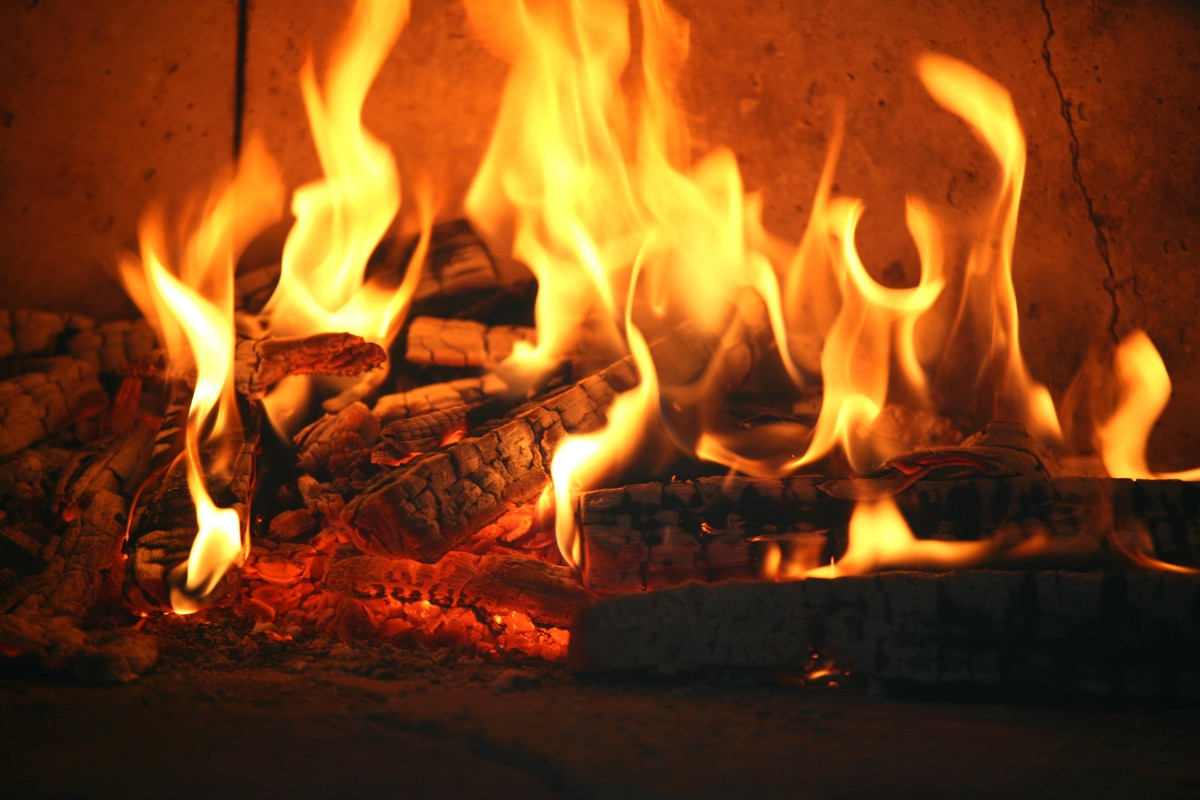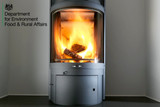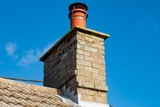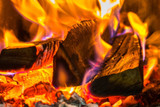How to Fit a Twin Wall System for Stoves
Whether your home has an existing stainless steel twin wall flue or you've simply changed your mind about the type of heating system you want, you may be wondering if you're stuck with your current option.
The good news is that it is possible to fit a cosy wood-burning fire into a twin-wall insulated stainless steel flue system as a chimney to remove harmful gases from the atmosphere. This eliminates the need to build a masonry chimney stack which could be very costly and take up a large amount of floor space internally and externally on your property. It also helps you avoid some of the disadvantages of having a chimney.
What to Know About a Twin Wall Flue
Before fitting a traditional or modern appliance into a twin-wall flue system, you must consider some elements to determine the best and most cost-effective way to remove harmful gases safely.
Since your flue pipe is the foundation of your stove installation, it's essential to consider where it will be located and how you prefer to have it installed. Due to the broad range of components in the twin wall system, you have some options here.
There are two ways to flue your appliance, internally or externally. Internally, it will consist of the twin wall fire-rated product passing up through the floors of the building until the final roof penetration to termination. During an internal installation, firestop components are used to protect the flue system as it passes throughout the entire height of the building via combustible floors along with living and loft spaces. Boxing in of the twin flue system will be necessary for bedroom areas, and protection will need to be offered within loft spaces to prevent any risk of items touching the outer casing of the pipe.
External installations run up the exterior of the building, terminating at a specific height above the tiles to help the twin wall system draw correctly. Generally, the twin wall flue will pass through the external wall at a 45° angle to assist with the smooth flow of gases and allow the easy sweeping of the flue system at a later date. The external wall of the building will need to be sleeved to allow the twin-wall pipe to pass through, and decorative cover plates can be installed to offer an aesthetic look to the installation. The twin wall flue system is swept via the appliance or an angled 135° tee section located externally with a removable cap.
The decision for an internal or external flue system is usually site-specific. External installations may need fixed scaffolds or special access requirements, and internal installations may not have the required clearance for the thorough floor and living areas to accommodate the minimum distance to combustibles.

Fitting a Wood Burning Stove for Your Twin Wall Flue System
Now that you've decided which twin wall flue suits you, it's time to start looking into fitting your wood-burning stove. We are right there with you if you're among the many homeowners who would gladly trade a gas or electric stove for the sound and smell of a roasting fire. However, it's essential to contact a professional HETAS registered installer before taking on such a project to ensure the proposed installation is the first possible. It will meet the current building regulations and be tied to your house insurance.
The installation must be signed off by a qualified HETAS installer who will register the product warranty and register the installation with HETAS, too. Also, check building regulations and look at other areas, like combustible floors. Another thing to check is the distance to combustible materials from your stove. If you're still set on installing a fireplace, there are some supplies you'll need to fit your wood-burning stove.
What You'll Need
First, you'll need to narrow down the type of wood-burning stove you want to install. Typically, this means choosing between a multi-fuel stove and a traditional wood-burning stove. If you select a multi-fuel or wood-burning stove, you will have some flexibility in what your stove uses. Multi-flue appliances can be fuelled by wood, coal, or other smoke-free fuel. Once you have your stove of choice, you'll need a correctly sized stove pipe. This means the diameter of your stove pipe is the right fit for your chosen stove while maintaining the aesthetic quality you're looking for.
Please ensure that your stove matches all the measurements required for your existing twin wall flue system. Otherwise, you'll need to buy a new one to match, as some old twin wall flue systems don't meet the current regulations, which request a 25mm (1") insulated cavity on either side of the inner flue liner. Finally, you'll need a hearth for your stove to rest on. It's recommended that your hearth has a density of 12mm thick. It will also need to cover roughly 225mm (9") in front of the door of your stove (subject to the type of stove and door width). In addition to making your stove look even more authentic, your hearth will also help keep your home safe as it dramatically reduces fire hazards.
Extra Options
Some homeowners looking to add an extra rustic appeal will add additional elements to their stove top to give it the desired look and feel. This can be done using a fireplace chamber or a fireplace beam. Both of which provide a clean look and feel. You can also add additional storage for your wood or choose a glass door to make the fire more visible in the room. It's all a matter of preference. Whatever add-ons you choose, ensure they are safe and won't increase your fire risk. Part of doing this means shopping with a trusted manufacturer that knows where to take extra precautions.
Installation and Fitting
You're ready to start once you know where to install your twin wall insulated flue. If working with an exterior flue pipe, you will need to have the wall broken out to allow for the installation of the flue pipe to the external leaf of the building. Additionally, the hearth will need to be set in place, allowing the minimum combustible clearances around the stove. The pieces of your stove and your flue will be connected, allowing the smoke to make its way through the twin flue system.
You may require the external flue system to match the colour of your brickwork or building, which can be achieved by powder coating the flue sections to any BS or RAL colour prior to installation.
Finding the Right Twin Wall Flue for Your Vision
Once you've installed the suitable twin wall flue into your home, you'll be one step closer to the cosy fireplace or wood-burning oven you've always dreamt of. The key is finding a quality manufacturer you can rely on. Installing a twin wall flue and wood-burning stove takes time, money, and hard work. This is why the last thing you want is to rip it out and start over due to a poorly manufactured wall flue. This is why Nationwide Chimney Components puts time, passion and care into manufacturing your flue and chimney needs.
Our stoves and flues provide quality performance that will last. If you're still having trouble finding a suitable twin wall flue for your home, contact us today so we can help.
Recent Posts
-
New Wood Burning Stove Regulations for 2025
There’s a lot of confusion in the UK about wood burner regulations and if you can still install a lo …Mar 04, 2025 -
Tips for Capping a Chimney: Benefits, and Installation
Why cap a chimney? It’s to stop moisture, downdrafts and pests. This guide has everything you need t …Jul 02, 2024 -
The New Regulations for Burning Logs In Wood-Burning Stoves
The government has introduced new regulations for customers looking to burn wood in stoves, coming i …May 25, 2021




